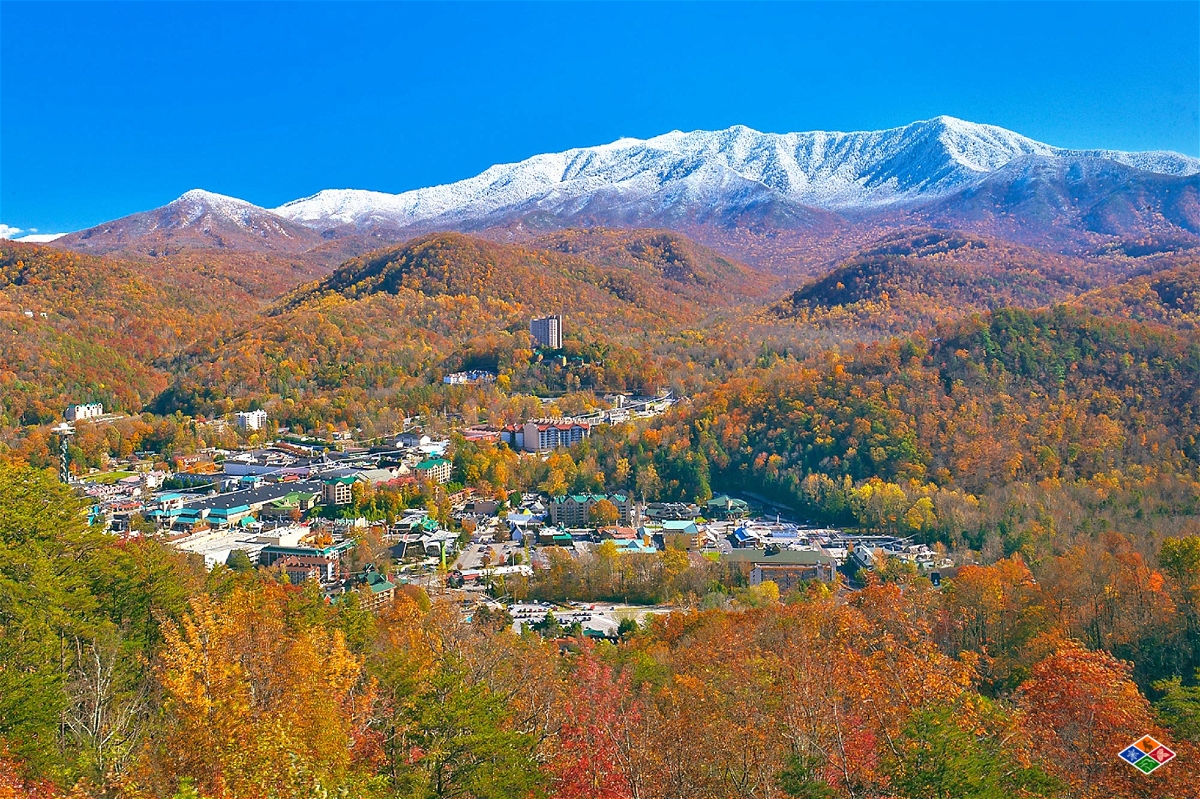
Great Smoky Mountains National Park is one of the top nature areas in the United States. While the area is appealing year-round, thousands of visitors flock to the region every autumn as 500,000 acres of foliage erupt into a symphony of orange, yellow, and red hues, filling the landscape with colorful trees. Such colorful trees create a stunning visual experience throughout the park.
If you’re planning a trip to the Smoky Mountains in the fall, you’re well on your way to an outstanding vacation. The park’s wide range of elevations and ecosystems supports a remarkable diversity of native deciduous trees, including American beech, mountain maple, red maple, and pin cherry, all of which play a key role in the fall color display. The fall color display changes as the season progresses, starting at higher elevations and gradually moving downward, offering weeks of vibrant scenery. The exact dates of peak color are difficult to predict due to environmental factors, so flexibility is important when planning your visit. That said, you need to know the best activities and peak foliage times to make the most of your trip. In this guide, we’ll cover everything there is to know about the Smokies during the fall season.
The Great Smoky Mountains National Park stands as the most visited national park in the United States, and for good reason. Each autumn, the park transforms into a breathtaking canvas of color, drawing millions of visitors eager to witness its stunning fall foliage season. Thanks to the park’s wide range of elevations and its incredible diversity of native deciduous trees, the Smoky Mountains offer a vibrant display of autumn colors that lasts for several weeks. The park is home to over 100 species of native trees that contribute to its fall colors, making it a unique and diverse destination for nature enthusiasts.
As mid-October approaches, the hills and valleys of the Smoky Mountains burst into a spectacular display of reds, oranges, and golds. The park’s native trees—such as sugar maple, scarlet oak, and yellow birch—are responsible for much of the incredible fall colors that blanket the landscape. Whether you’re a first-time visitor or a seasoned leaf-peeper, the Smoky Mountains National Park promises an unforgettable experience with its vibrant display of autumn colors, making it a must-see destination during the fall.
The best time to see fall colors in the Smoky Mountains is from mid- to late October. While you’ll have an unforgettable experience no matter when you visit the Smokies, autumn is particularly special because its fall color display offers a welcome break from the summer humidity. Fall foliage at high elevations often begins around mid September, providing an early glimpse of the changing landscape.
Cooler temperatures at higher elevations trigger color changes earlier. In late September through mid October, higher elevations in the Smokies show faint fall colors with soft golds and russets, while lower areas remain green. As the season progresses, the fall color display moves down the mountains, creating a dynamic and extended viewing period.
Mid to late October features bold maroons and vivid tangerines at mid-elevations. Lower elevations follow suit from late October to early November, with glowing golds, striking scarlets, and bright browns. During peak color season, the landscape is filled with an abundance of colorful trees. The peak of colors at middle to lower elevations usually occurs from mid-October to early November with trees like sugar maple and scarlet oak, creating a breathtaking display.
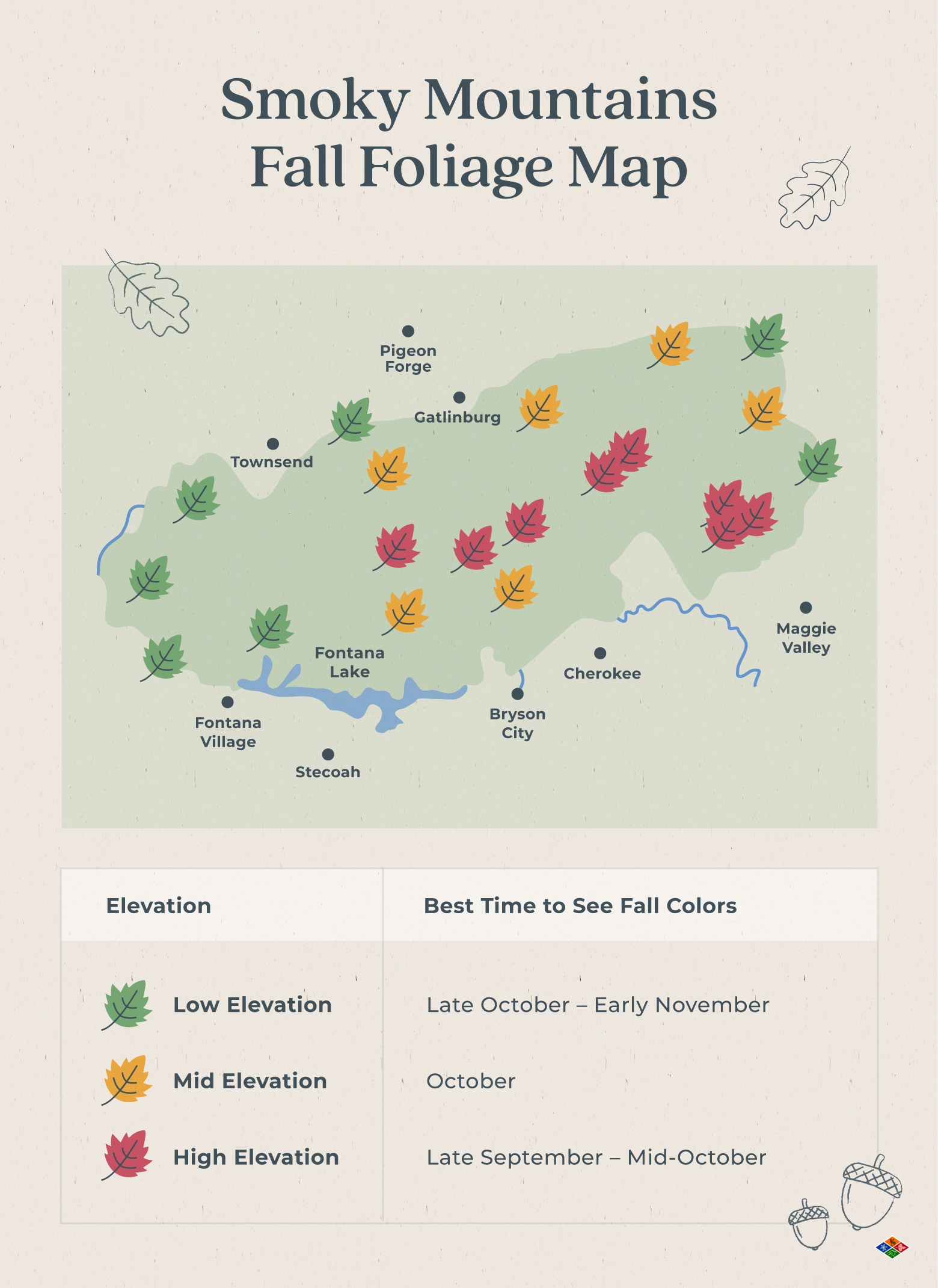
As August comes to a close, the cooler mountain air begins to sweep through the region, paving the way for the first glimpses of fall transformation. Around mid September, trees like mountain maple, American beech, and pin cherry begin changing color at high elevations, contributing to the early fall color display. Birch, maple, cherry, and other species of trees start their initial changes in the park’s higher elevations, such as Clingman’s dome. At higher elevations, fall colors begin with trees like yellow birch, American beech, and mountain maple in mid-September. During this time, trees in lower elevations are not yet ready to start changing color — it will typically be a few weeks before that happens.
The best places to drive to see Smoky Mountains fall foliage are:
The best places to hike to see Smoky Mountains fall foliage are:
Sorry, Cabins can’t be previewed in the block editor. You can instead save this post as a draft to preview before publishing.
At the start of the month, the leaves look similar to September — just a few changing trees in the higher elevations while the foliage is predominantly green below. However, as the mountain air becomes colder, a beautiful cascading effect engulfs the region, and trees begin to turn colors at lower elevations. By mid to late October, most of the region becomes engulfed in fall hues. Dogwood, walnut, hickory, and red maple have all changed colors at lower elevations, and the fall color display is perfect for hikes, sightseeing, and other outdoor activities. Whether you come for a family vacation or a honeymoon getaway, you’ll see breathtaking views.
The best places to drive to see Smoky Mountains fall foliage are:
The best places to hike to see Smoky Mountains fall foliage are:
November marks the end of the fall season in the Smokies, but there are still opportunities to enjoy the colors in the early parts of the month. The fall color display lingers at lower elevations into early November, offering visitors a chance to catch the vibrant scenery before winter sets in.
As the mountain air gets cooler still, colors in the higher elevations of the park begin to fade and fall. However, trees in the middle to lower elevations still proudly show off their colors — species such as dogwood, sumac, and spicebush. This means the start of November is perfect for sightseeing in lower-elevation areas such as Gatlinburg. The fall colors typically end around the first week of the month. However, visitors can still experience the scenery at lower elevations up to mid or late November if the weather cooperates.
The best places to drive to see Smoky Mountains fall foliage are:
The best places to hike to see Smoky Mountains fall foliage are:
There’s a variation of temperatures between elevations in the Smoky Mountains in the fall. In Gatlinburg and lower elevations, the autumn warmth lingers with September highs of 83ºF, while November brings a crisp fall chill with lows down to 33ºF. At higher elevations, fall temperatures turn brisk, making layering important for visitors to stay comfortable as they explore the park.
At Clingmans Dome and higher elevations, fall temperatures turn brisk. September ranges from 47ºF to 60ºF, and November ushers in cooler weather, with temperatures dropping between 28ºF and 42ºF.
Gatlinburg, TN (Low Elevation)
Clingmans Dome (High Elevation)
So, what is the best time to see fall colors in the Smoky Mountains? It depends on your preference — some prefer late September for quiet crowds at a lower price point, while others prefer October when the fall foliage colors are at their peak.
Source for all temperatures: National Park Service
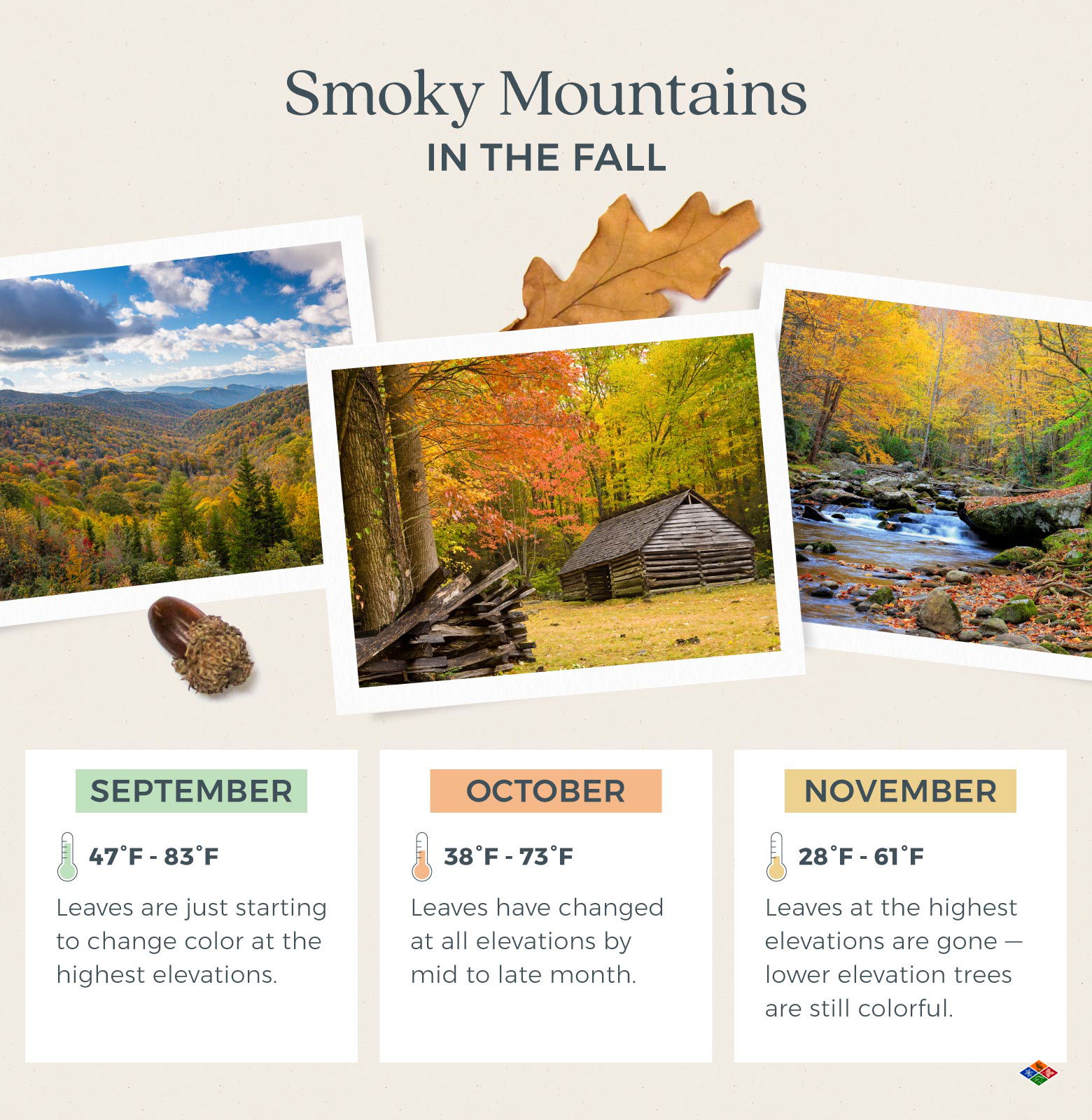
A fall getaway to the Great Smoky Mountains is an unforgettable experience, but a little planning goes a long way to ensure you make the most of your visit. The stunning fall foliage draws large crowds, especially during peak season, so it’s important to plan ahead to avoid peak crowds and traffic congestion. To avoid peak crowds, consider arriving before 8 a.m. or after 4 p.m. when visiting the park in October. Start by checking the park’s official website for the latest updates on fall foliage conditions, trail closures, and special events.
Accommodations and popular activities fill up quickly during the fall, so be sure to book your lodging and any must-do experiences well in advance. The park offers a variety of ways to enjoy the autumn scenery, from hiking and scenic drives to wildlife viewing. Don’t miss out on ranger-led hikes and fall programs, which offer fascinating insights into the park’s natural wonders and cultural history. By planning ahead, you’ll be able to enjoy the best of the Smoky Mountains’ fall foliage while avoiding the stress of peak crowds and last-minute changes.
The Smoky Mountain scenery and temperate weather make it perfect for spending time outside. Participating in fall activities not only allows you to enjoy the beauty of the season but also enhances your overall park experience by taking advantage of special events and improvements supported by park fees. For the most up-to-date information on fall programs, be sure to check the park newspaper or the online calendar for schedules of ranger-led hikes, educational events, and other activities.
Here are a few of the most popular fall activities.
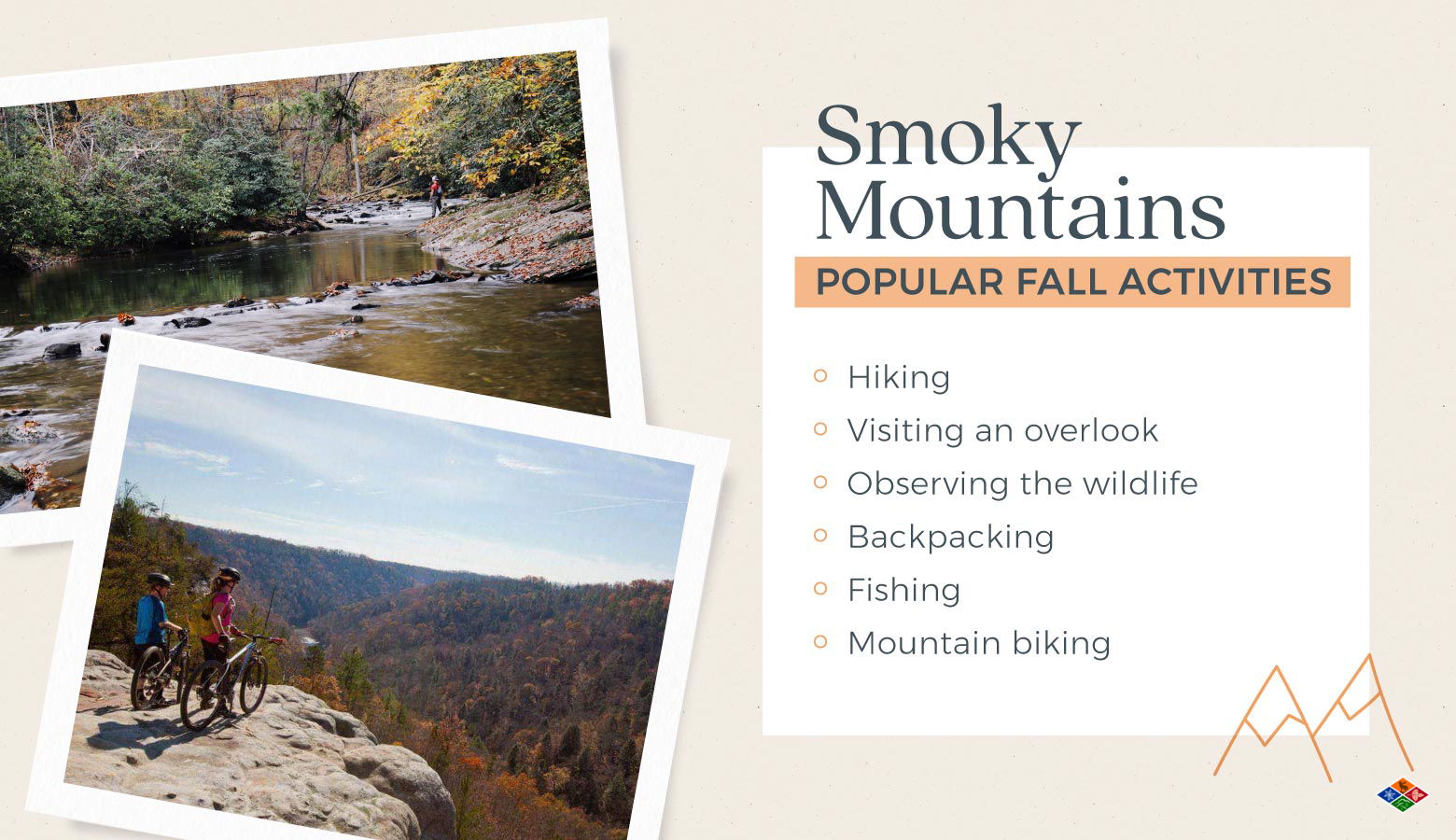
Consider exploring less visited trails for a quieter and more unique adventure during your visit.
With over 800 miles of hiking trails throughout the park, the Smoky Mountains provide plenty of opportunities to spend time in the great outdoors. Visitors flock from all over the globe to explore the Tennessee and North Carolina wilderness — and fall is no exception. For a more peaceful hike and to avoid crowds, consider exploring less visited trails, which offer beautiful scenery and a quieter experience.
Enjoy the foliage through several suitable trails, like:
Hiking is a great way to explore and take in the scenery, but you may want to enjoy the wilderness in a more relaxing way. In that case, there are many leisurely activities and fall overlooks to get a bird’s eye view of the surrounding foliage without breaking a sweat. Many overlooks and viewpoints are also accessible via the park’s scenic roads, making it easy to enjoy breathtaking views from your vehicle.
Some of the most popular attractions include:
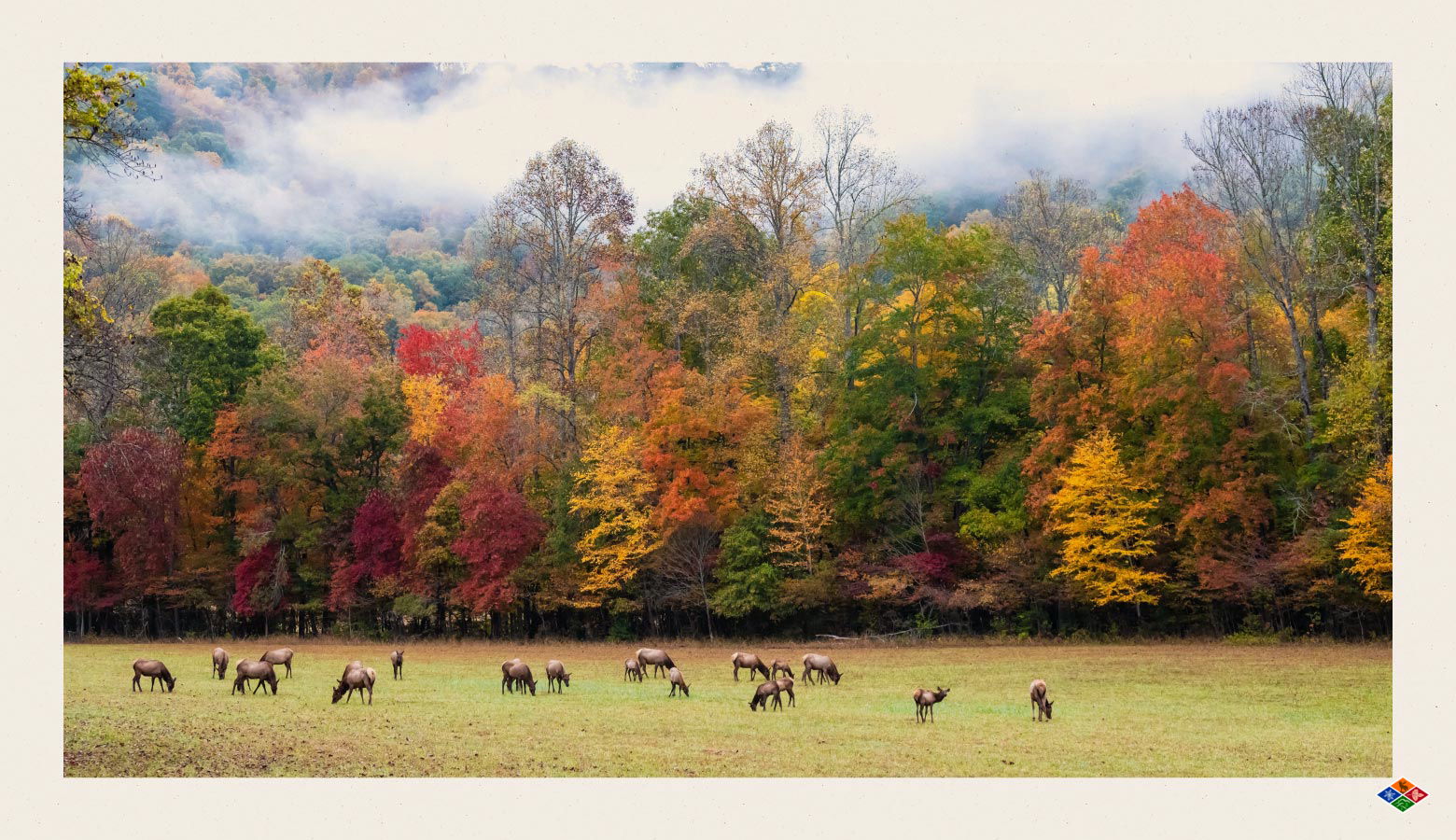
Visitors can spot animals throughout the year in the Smokies, but an added dose of magic comes with sightseeing in the fall colors. Fall is also a prime time for wildlife safety—be sure to keep a safe distance from the park’s wildlife, such as bears and elk, and always use bear proof dumpsters to prevent bears from accessing human food and garbage. Fall is the breeding season for elk, known as ‘the rut’, and large male elk can be seen with harems of female elk during this time. Practicing wildlife safety in the fall helps protect both visitors and animals.
Here are a few of the top places for observing wildlife in the Smokies — make sure to bring your camera:
There’s arguably no better way to get immersed in the wonders of the Smokies than by going backpacking. Fill your days taking in the foliage on one of the park’s many hiking trails, and spend your nights exchanging campfire stories and sleeping under the stars — remember, you will need a backpacking permit
Some of the best backpacking trails and experiences in the Smokies are:
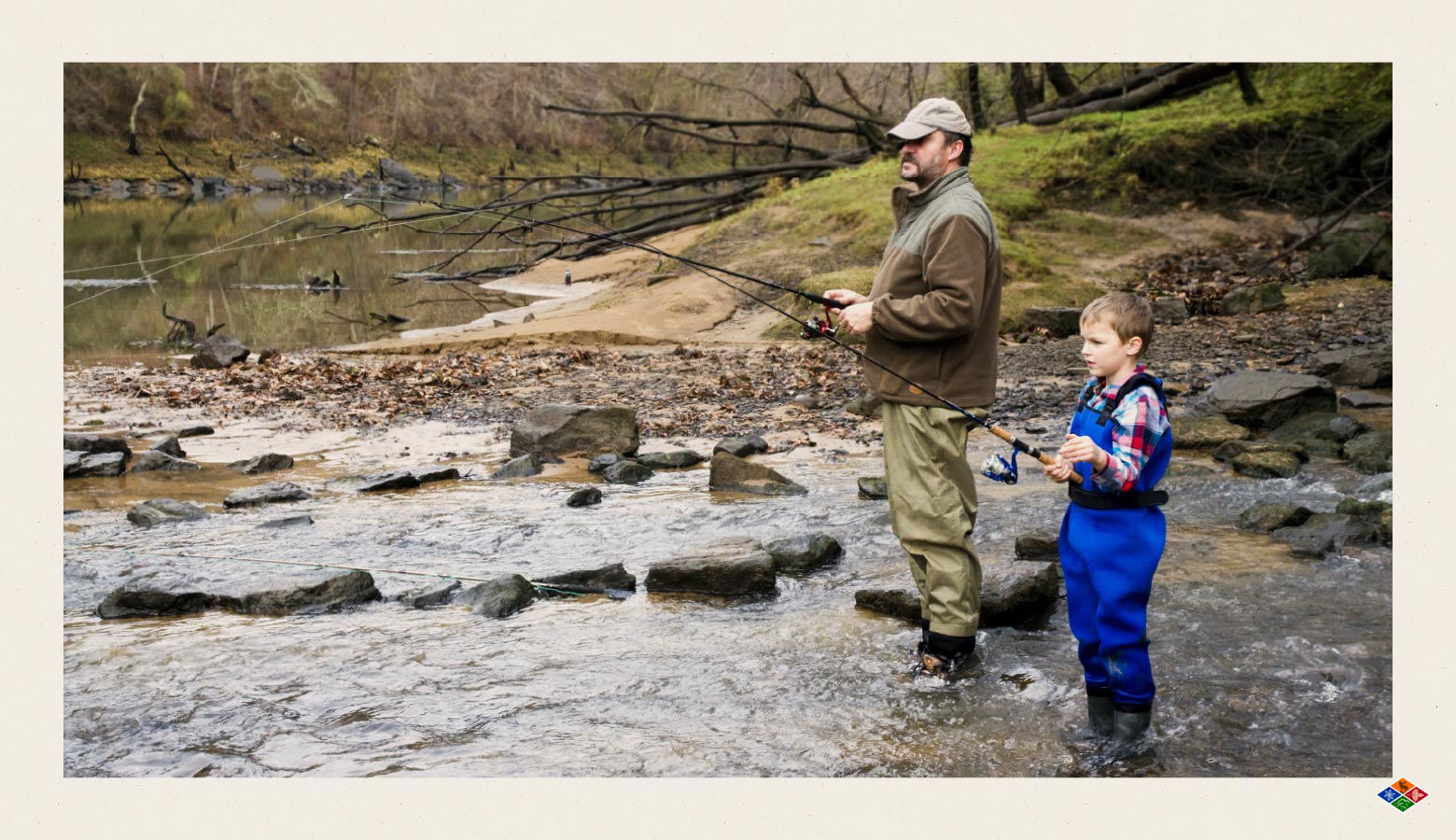
Fall is a good time of the year to fish in the Smokies. While the water level is typically low — therefore, slower currents and a slightly harder time catching fish — the weather is perfect, and the mosquitos have almost completely disappeared. There are nearly 3,000 miles of creek to explore — but you will need a fishing permit
A few of the best areas to fish in the area include:
Sorry, Cabins can’t be previewed in the block editor. You can instead save this post as a draft to preview before publishing.
Mountain biking is a way to experience the beauty of the Smokies while exercising. It’s important to note that the park has no designated mountain bike routes, and bikes are prohibited on many hiking trails.
That said, a few locations in the park are worth bringing your bike for:
A scenic drive in the Smoky Mountains during fall offers an effortless way to immerse yourself in autumn colors. Travel along scenic roads lined with colorful trees, where you can access overlooks, changing landscapes, and wildlife without the physical strain of hiking. These popular scenic roads include:
One of the most beautiful aspects of the Smoky Mountains is the holiday cheer and festivals that visitors can find throughout the surrounding communities. Many fall festivals and events also take place in nearby communities around the park, offering even more opportunities to celebrate the season. Starting in September, there are endless fall activities in Gatlinburg and Pigeon Forge.rge.
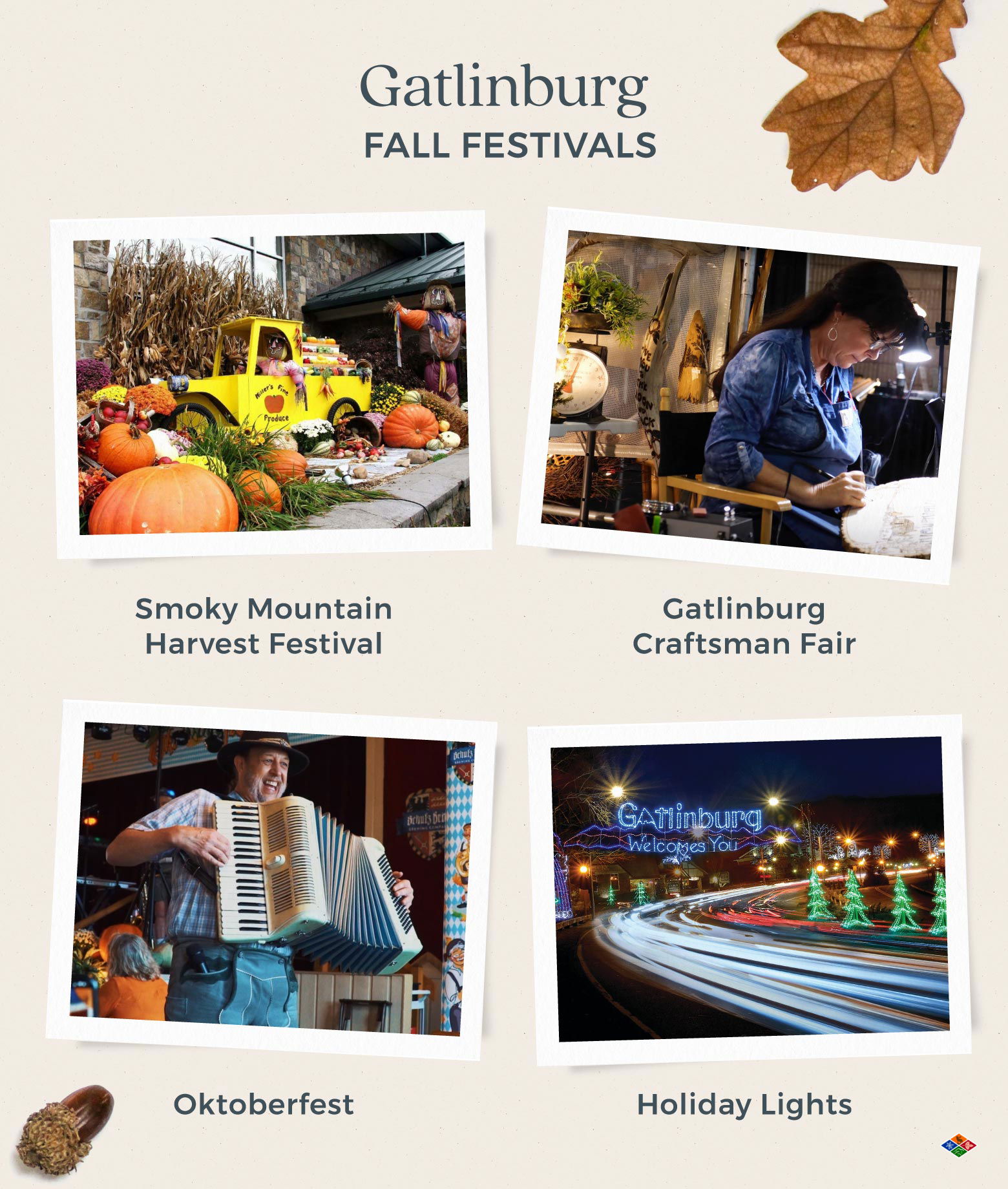
Some of the most popular events include:
Parking and accessibility are key factors to consider when visiting the Great Smoky Mountains National Park during the busy fall season. With the influx of visitors eager to see the fall colors, parking can be limited at popular trailheads and scenic spots. Parking in the Smoky Mountains for more than 15 minutes requires a valid parking tag. To make your visit smoother, plan to arrive early or take advantage of the park’s shuttle services when available.
A valid parking tag is required for all vehicles parked within the park, and these can be purchased online or at the visitor center. The recreation fee dollars collected from parking tags help maintain public park facilities, increase park ranger presence, and improve visitor safety throughout the Smoky Mountains National Park. You’ll notice well-kept trails, clean restrooms, and helpful park rangers—all thanks to these efforts.
Visitor safety is especially important during the fall, as wildlife like bears and elk are more active. Always keep a safe distance from animals and follow posted guidelines to protect both yourself and the park’s wildlife. By following the park’s rules and planning your visit with parking and accessibility in mind, you’ll help preserve the natural beauty of the Smoky Mountains and ensure a safe, enjoyable experience for everyone.
You’ll be able to find the perfect lodging for your trip in any number of the nearby communities surrounding the park, such as Gatlinburg and Pigeon Forge.
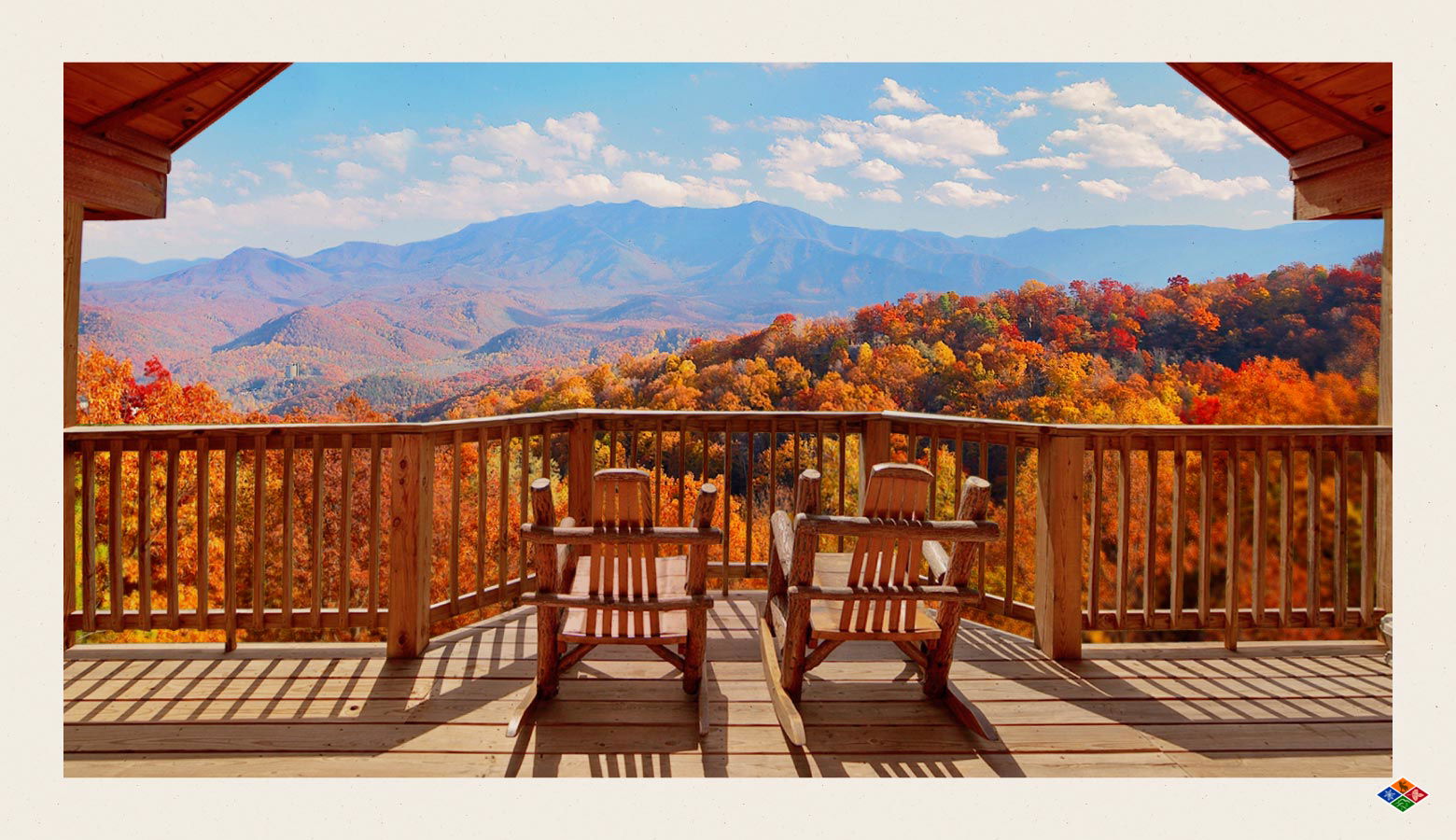
See this this view in real life by staying at the Bear Den
If your destination is Gatlinburg, you’ll be able to find cabins, bed and breakfasts, and more that immerse visitors in the expansive wilderness of the Smokies.
At Elk Springs Resort, we offer cabins in Gatlinburg equipped with hot tubs, fireplaces, pools, and more to make your stay unforgettable. Try a creekside oasis for lodging next to prime fishing territory or a cabin with a view to take in the fall colors from the comfort of your deck.
Sorry, Cabins can’t be previewed in the block editor. You can instead save this post as a draft to preview before publishing.
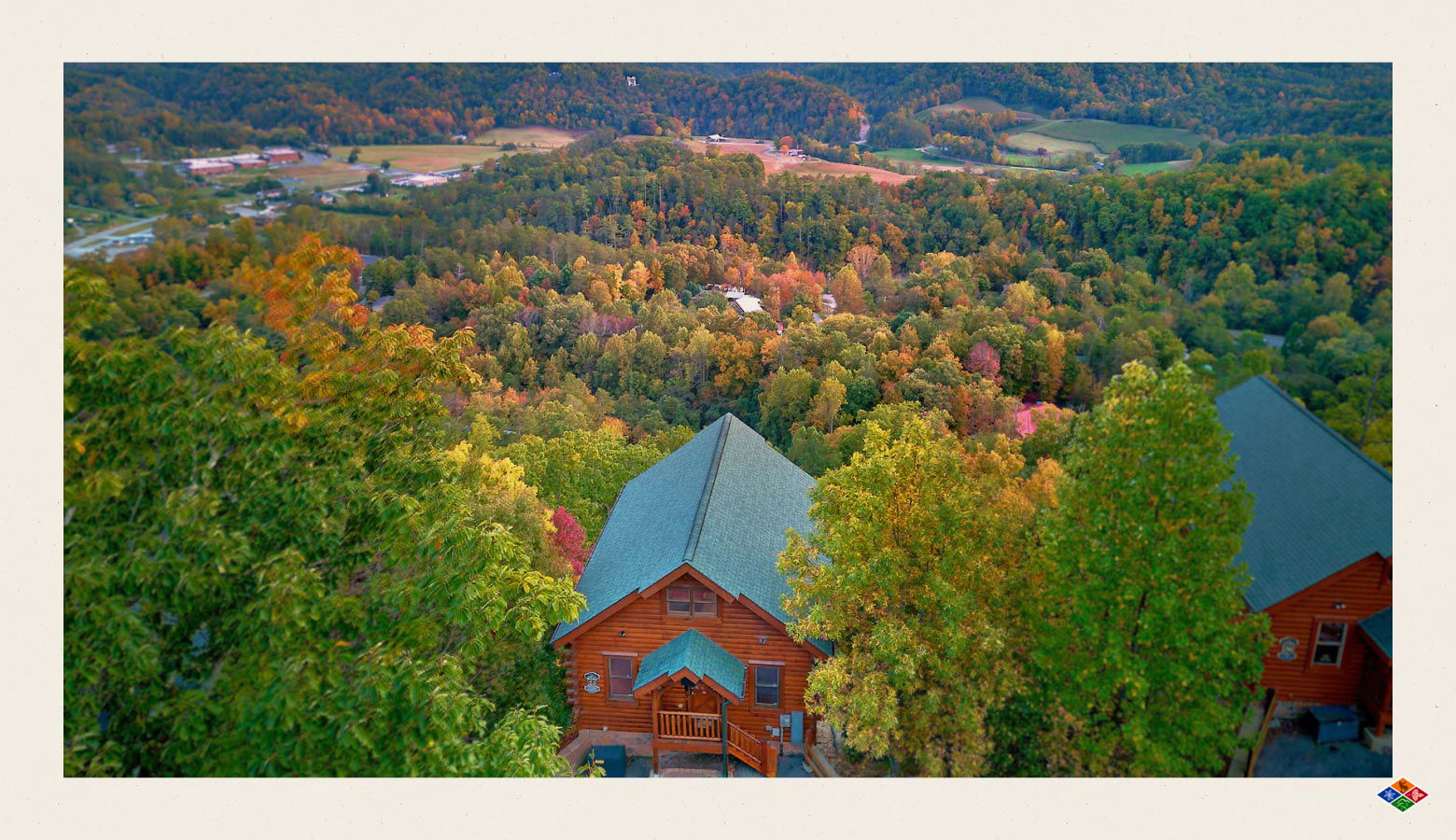
We offer Pigeon Forge cabins that make you feel more in touch with the surrounding scenery. Try an estate or stay in a 2 bedroom cabin with a private heated indoor pool within walking distance from the Great Smoky Mountain Ferris Wheel, or a secluded hideaway close to hiking trails. You can also sneak away to the Dollywood theme park for a day when staying in the area.
Sorry, Cabins can’t be previewed in the block editor. You can instead save this post as a draft to preview before publishing.
A trip to the Great Smoky Mountains in the fall is an experience you’ll never forget. Hiking, fishing, and exploring the park are magical no matter the season — and even more so when surrounded by the awe-inspiring fall foliage. To make your trip perfect, select the right lodging for your needs.
At Elk Springs Resort, we have picturesque Smoky Mountain cabins for couples, groups, and solo travelers looking to experience the autumn colors during an unforgettable trip.